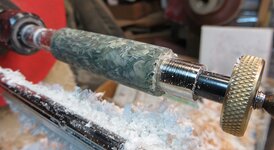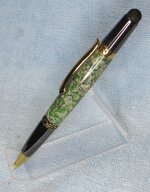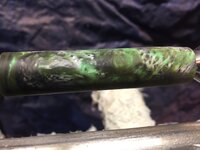thawkins87
Member
So I just recently got into pen turning. I made a few cool pens from exotic woods and tried my hand on an acrylic blank (I believe it was an inlace acrylester blank). Once I got the blank to round and started turning it down, I noticed my carbide tools were essentially just "chunking out" pieces of blank instead of pulling off in ribbons like it shows in all the videos I watched.
I guess my question is, can you use carbide tools to turn acrylics, or have I unknowingly committed a faux pas? If most people don't have a problem with carbide tools and acrylic blanks, is there something I'm doing wrong? Any tips, etc? I use my round cutter on most things, and this particular blank i tried turning at probably 1000 rpm or so.
I ended up being able to salvage the blank by turning it to shape plus about 1/8" on the radius or so and sanding it down for an hour, but I'm not keen on repeating that process...
Thanks!
I guess my question is, can you use carbide tools to turn acrylics, or have I unknowingly committed a faux pas? If most people don't have a problem with carbide tools and acrylic blanks, is there something I'm doing wrong? Any tips, etc? I use my round cutter on most things, and this particular blank i tried turning at probably 1000 rpm or so.
I ended up being able to salvage the blank by turning it to shape plus about 1/8" on the radius or so and sanding it down for an hour, but I'm not keen on repeating that process...
Thanks!







